DYNA III Classe de Investimento em Ações – Responsabilidade Limitada
Investment Goals
The objective of the Class is to provide its participants with real appreciation of their shares over the medium and long term by investing in a diversified portfolio of securities, with the principal risk factor being the price fluctuations of shares admitted to trading on the spot market of a stock exchange or an organized over-the-counter market entity, in compliance with applicable legal and regulatory limitations.
Investment Policy
The Class employs a pure bottom‐up fundamental‐analysis framework for equity management, engaging directly with portfolio companies to deliver consistent medium- to long-term returns, dampen volatility, and de-emphasize near-term liquidity.
The Class will allocate no less than 67% of its net assets to equity securities and/or equity‐based instruments whose primary risk driver is share-price fluctuation of stocks admitted for trading on a recognized stock exchange or organized over-the-counter market, in compliance with prevailing legal and regulatory limits. The remaining balance may be invested in any financial instruments or investment structures permitted under applicable regulation.
* See detailed description in the bylaw.
Target Public
The Class is intended for certain qualified investors, as defined by the applicable regulations and specified in the annex to the Class.
Key Risk Factors
The Manager’s risk assessment and management process permeates the entire investment decision-making process. An asset’s risk is not numerically determined from a precise definition of variance of returns around the mean, but is incorporated as a variable throughout the fundamental analysis process. With regard to portfolio risk measurement, the approach employed is primarily bottom-up, emphasizing specific risk analysis of each asset. Additionally, the Manager considers underlying sector diversification issues and their implications for portfolio concentration.
Additionally, due to the high concentration of the Class’s investments in the Master Class, the Class’s risk factors are predominantly the same as those of the Master Class. Among the principal risk factors of the Class are:
- Capital Loss Risk: The investment strategies employed by the Class and the Master Class may result in significant capital losses for their unitholders, including the total loss of invested capital.
- Market Risk: Fluctuations in asset prices and quotations may negatively impact the net asset value of the Class and the Master Class.
- Liquidity Risk: A reduction in demand for the Master Class’s assets may prevent the Class from efficiently meeting its obligations and result in significant losses when trading those assets.
- Concentration Risk: The portfolios of the Class and the Master Class may be concentrated in assets from a small number of issuers, increasing exposure to issuer-specific risks and causing volatility in unit values.
- Derivatives Risk: The use of derivative strategies as part of the investment policy may result in significant capital losses for unitholders of the Master Class and, consequently, for unitholders of the Class.
- Credit Risk: The Class and the Master Class are exposed to the risk of default by counterparties and issuers of the assets, which may lead to loss of income and invested capital. Changes in the financial, economic, or political conditions of issuers may significantly affect asset prices and liquidity.
For a comprehensive assessment, we recommend reading the fund’s Regulation, where detailed information on all risk factors is available.





